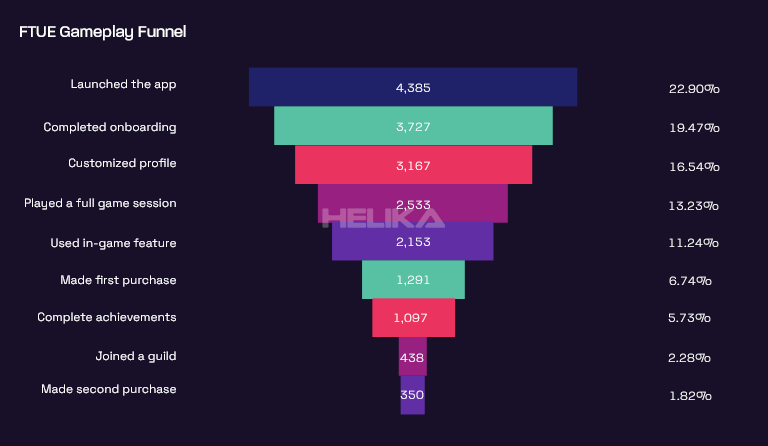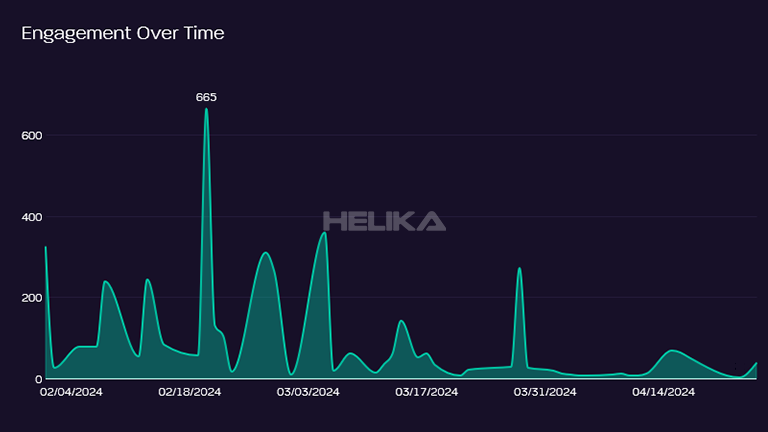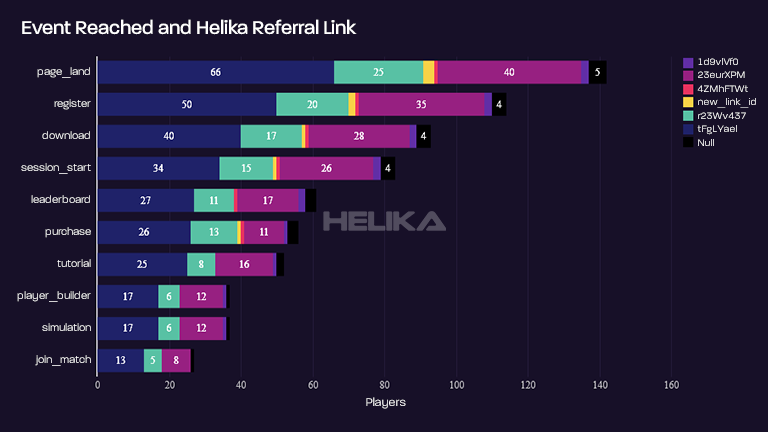One of the key goals for the onboarding process of your Web3 game should be to ensure a good completion rate. This means that the majority of your users should be able to successfully complete the specific tasks you have set for them. A high tutorial completion rate not only reflects a good on-boarding experience, but also leads to higher customer satisfaction and increased user retention.
Make sure to read this entire article because we will provide you with valuable insights on how to track tutorial completion rates for your Web3 game. Hidden in this article you will discover techniques that have helped industry leaders maintain high tutorial completion rates and keep their users engaged with their games.
Key Takeaways:
- Lower completion rate = missed revenue opportunities.
- An effective usability test can result in higher completion rates
- Utilizing analytics is one of the best ways to improve low completion rates.
- key performance indicators such as average completion rate can shed light on areas that need improvement.
The Importance of Helping Players Get Through Tutorials
To briefly summarize, the onboarding process is crucial for user retention and overall success of your Web3 game. Players who struggle with completing tutorials are likely to lose interest and abandon the game before even reaching the main gameplay. This not only leads to a loss in potential revenue opportunities, but also affects user engagement and satisfaction. So, how can we ensure that our players are successfully completing tutorials? Let’s dive deeper into some key strategies and techniques.
Firstly, AI chatbots can help guide players through tutorials and answer any questions they may have, improving their overall experience. By having a guide readily available, players are more likely to stay engaged and complete the tutorial.
Another effective strategy is to include interactive elements within the tutorial itself. This can include mini-games or challenges that allow players to apply what they have just learned in a fun and engaging way. It also helps break up the monotony of reading or watching tutorial content.
Through Web3 smart contracts, incentivizing users to complete tutorials is also possible with airdrop rewards. This not only encourages completion but also introduces players to the concept of in-game currency and how it can be earned through gameplay.
As you can see, there are various ways to help players successfully complete tutorials and improve their overall onboarding experience. By incorporating these strategies, you can increase user retention, engagement, and satisfaction, ultimately leading to a more successful and thriving Web3 game.
The Role of Effective UX Design For Better Tutorial Completion Rates
With Web3 technology, novel aspects of the game such as crypto wallet connectivity and in-game currency earning systems can be overwhelming for new players. This is where effective user experience (UX) design comes into play.
A well-designed tutorial not only teaches players how to navigate the game, but also introduces them to these unique features in a clear and concise manner. By breaking down complex concepts into digestible chunks, players are more likely to understand and retain the information being presented.
Additionally, good UX design ensures that tutorials are visually appealing and easy to follow. This includes using interactive elements, such as animations or videos, to keep players engaged and interested in the content. Clear instructions and user-friendly interfaces also contribute to a smoother learning experience.
Overall, investing time and resources into UX design can greatly improve tutorial completion rates and enhance the overall on-boarding experience for players. So, it is important to prioritize UX design when creating a Web3 game.
Analytics Platforms Such as Helika Improve Tutorial Completion Rates
With high-quality data provided by Helika analytics, user feedback can be interpreted in a way that game developers can use to improve tutorial completion rates. Helika provides comprehensive analytics on various metrics such as total number of users, conversion rate, and user engagement.


Helika data scientists and advisors can also share the next step for developers to improve their customer experience. By analyzing user behavior and interaction with the tutorial, Helika can pinpoint areas of improvement and suggest changes that will lead to higher completion rate metrics.
With that being said, tutorial rate completion isn’t the only factor to measure success. User retention and engagement are also important metrics to consider when evaluating the effectiveness of tutorials. Helika can provide insights on how long users stay engaged with the game after completing the tutorial, and how often they come back to play.
Finally, conversion rate of your in-game events is another important metric to consider. With Helika analytics, developers can track how many users complete certain in-game actions, such as making a purchase or completing a level. By understanding the user journey and their behavior, developers can make changes to increase conversion rates and potentially generate more revenue.

Case studies (available on our website) have shown that by implementing changes based on Helika analytics, developers have seen significant improvements in tutorial completion rates, user retention, and conversion rates. This highlights the importance of utilizing user feedback and analytics for continuous improvement in the gaming industry.
Final Thoughts
A high completion rate for your Web3 game’s tutorial can result in higher user satisfaction and retention, leading to increased revenue. User experience plays an important role in maintaining a good completion rate. As a part of the onboarding process, it’s essential that players know how to play the game but aren’t bored or overwhelmed with too much information. This balance can be achieved through effective UX design and incorporating user feedback into the tutorial process.
Additionally, utilizing analytics platforms such as Helika can provide valuable insights into user behavior during the tutorial process. With the ability to track each specific task, developers can identify areas where players are getting stuck and make adjustments to improve the overall completion rate. If you’re a game developer looking to gain valuable insights into your user actions, feel free to contact us to see how Helika can benefit your game.



